Peacocks, or peafowl, are among the most beautiful and vibrant birds. While males tend to have most of the color, females – also known as peahens – have a much more neutral coloring. While there’s a lot of debate over why the peacock has such a massive tail, Charles Irwin originally suggested that it had something to do with mate selection. However, the sounds peacocks make play an even more significant role in these relationships.
Why Is Vocalization Important for Peacocks?
The main reason that peacocks vocalize so much is because they’re communicating. These noises tell males if they are interested in a female and offer a straightforward way to distinguish a welcomed interaction from a dangerous threat. According to some studies, these vocalizations act as a love song to other peafowl, playing on their polygamous relationships. These songs even happen at different stages of mating to express protection, copulation, or flirtation.
Peacock Sounds and Meanings
Screaming
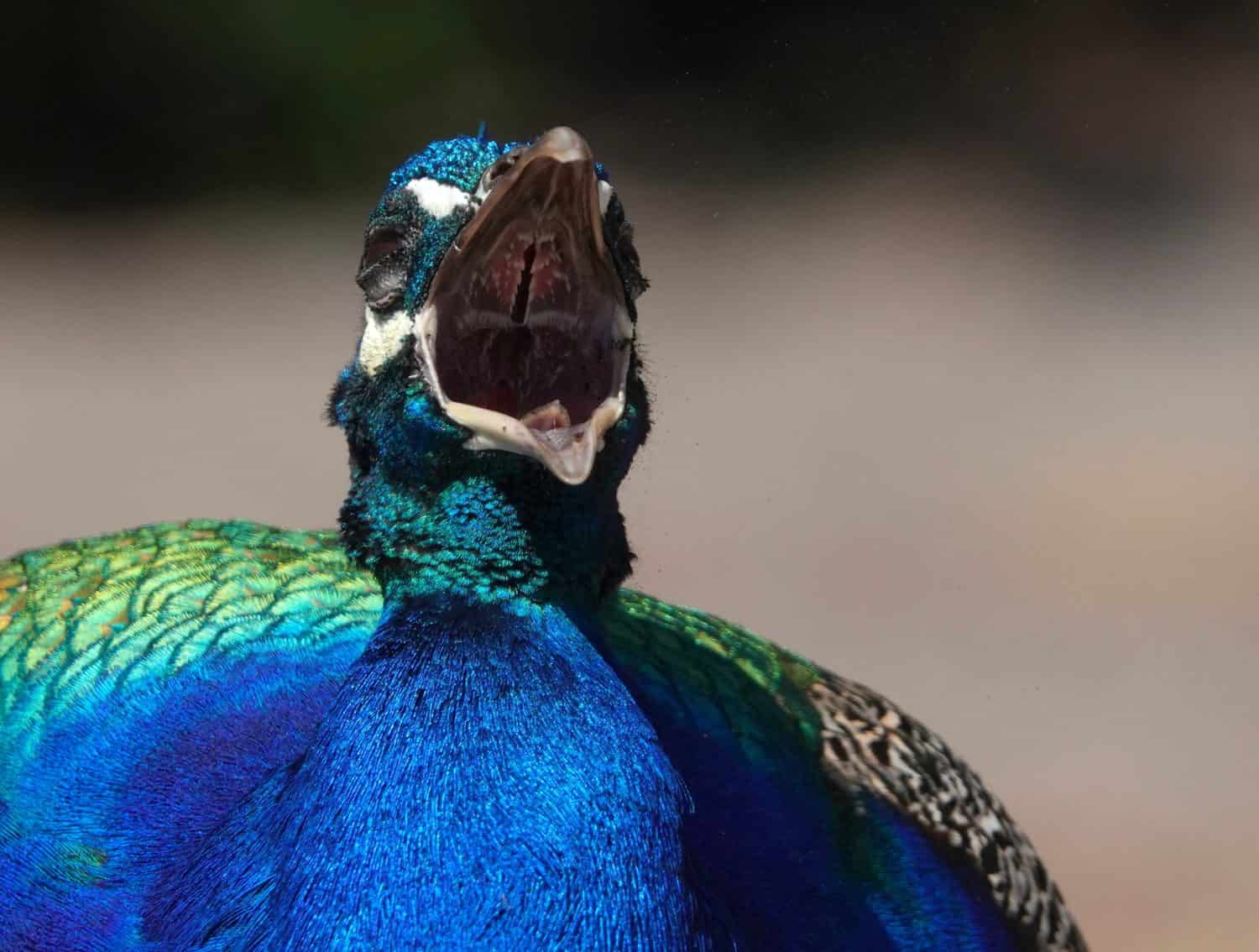
A male peacock screams to express their physical aptitude and dominance as a potential partner of a female peafowl.
©Simone Hogan/Shutterstock.com
Perhaps the most distinguishable of all peacock sounds is the scream. The most common time to hear this sound is during mating season, making the males more evident to the females they hope to woo. The scream ranges in pitch from a child’s cry to a woman’s scream. Males use it to show their incredible fitness, often displaying their colorful plumage simultaneously.
The scream can also mean that a threat is nearby. The scream alerts others that they are the dominant bird in the area. While you mostly only hear males scream, females also yell to scare off threats to their young.
Listen to a peacock screaming here:
Honking
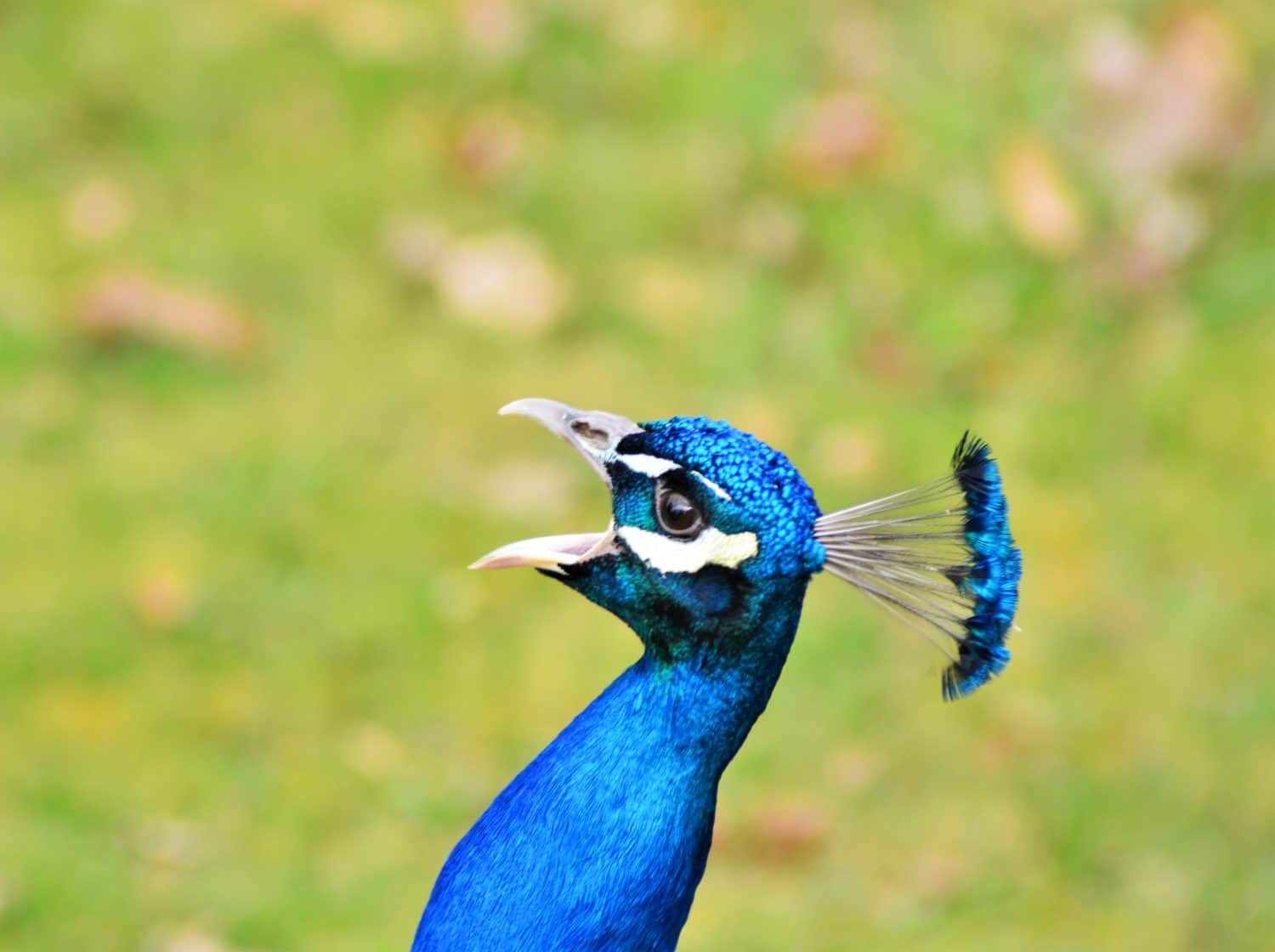
Caption: Honking is used to both invite a partner and mimic mating noises.
©Lara Red/Shutterstock.com
Mating season is alive and well with a variety of noises, and honking is just another one of those sounds. The honk is much deeper than a scream, using a guttural noise in the male’s throat that invites females to consider him their partner. While enticing females, males also use the honk to warn other males who want to steal their potential partner. Some say it sounds like a foghorn or someone honking the horn in their car.
In some cases, the males replicate the honking they would use during mating to entice females. This honking noise often comes with running aggressively toward the female in an attempt to mate.
Listen to a peacock honking here:
Rattling
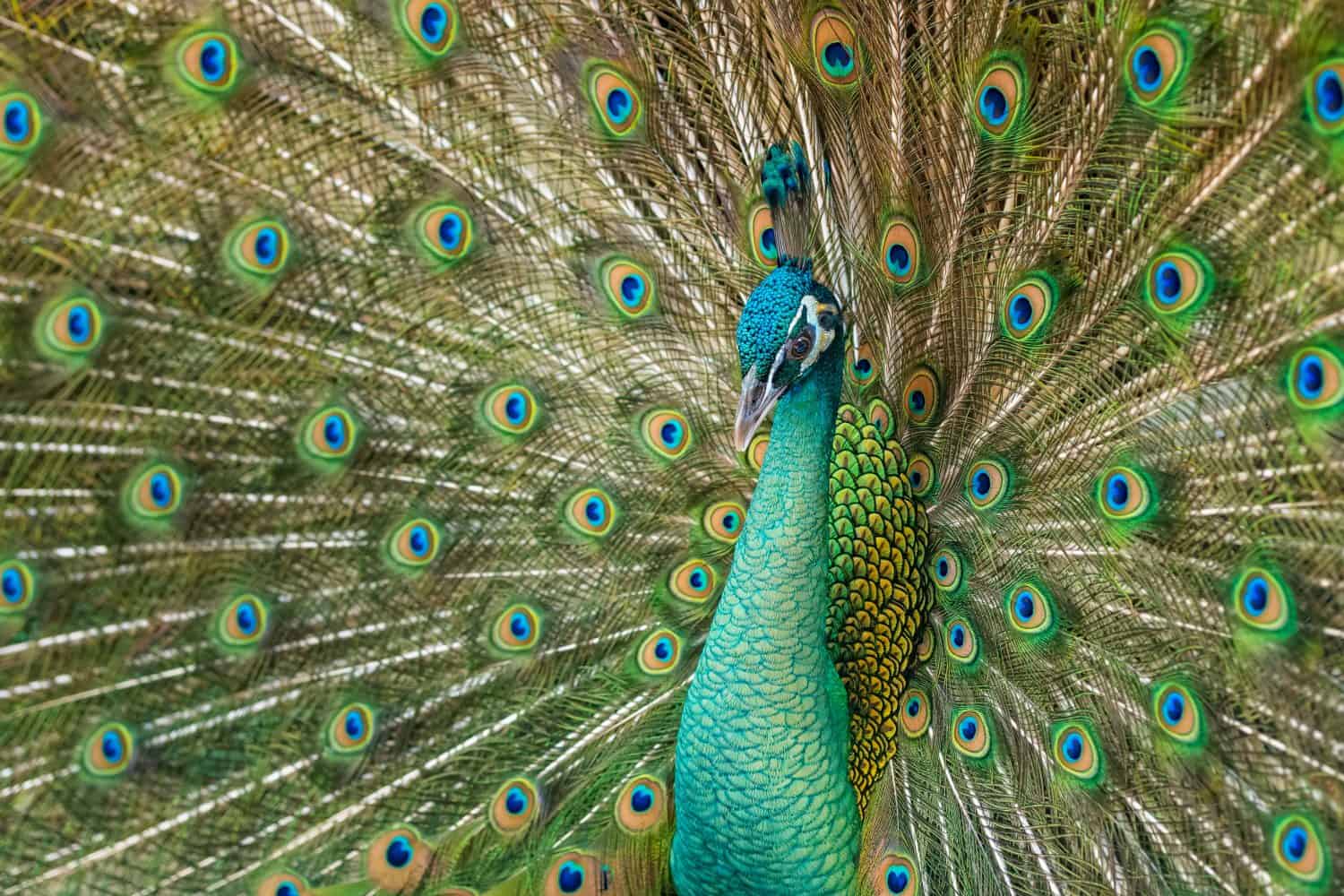
The mating noise that comes with the rattling – a clicking sound in the back of their throat – makes their “show” more unique to the bird.
©Mazur Travel/Shutterstock.com
Rattling is quite distinct, making a similar shaking sound to a rattlesnake. Instead of coming from the peacock’s throat, the rattling happens as they shake their tail feathers, rustling against each other. The most common time to hear this sound is when they display themselves during courtship. The rattling offers a background melody as they open their tails dramatically, showing what a beautiful partner they would be for the female they court.
To hear a peacock rattle its feathers, check this out:
Cawing

Peacocks have a similar caw to crows.
©EyesofWonder/Shutterstock.com
Peacocks release short, loud caws whenever they aren’t happy with what’s happening around them. The caw sometimes happens during agitation, though they also use it to show when they feel worried or stressed. Cawing warns other peacocks and animals that a predator is nearby.
Listen to a cawing peacock here:
Calling
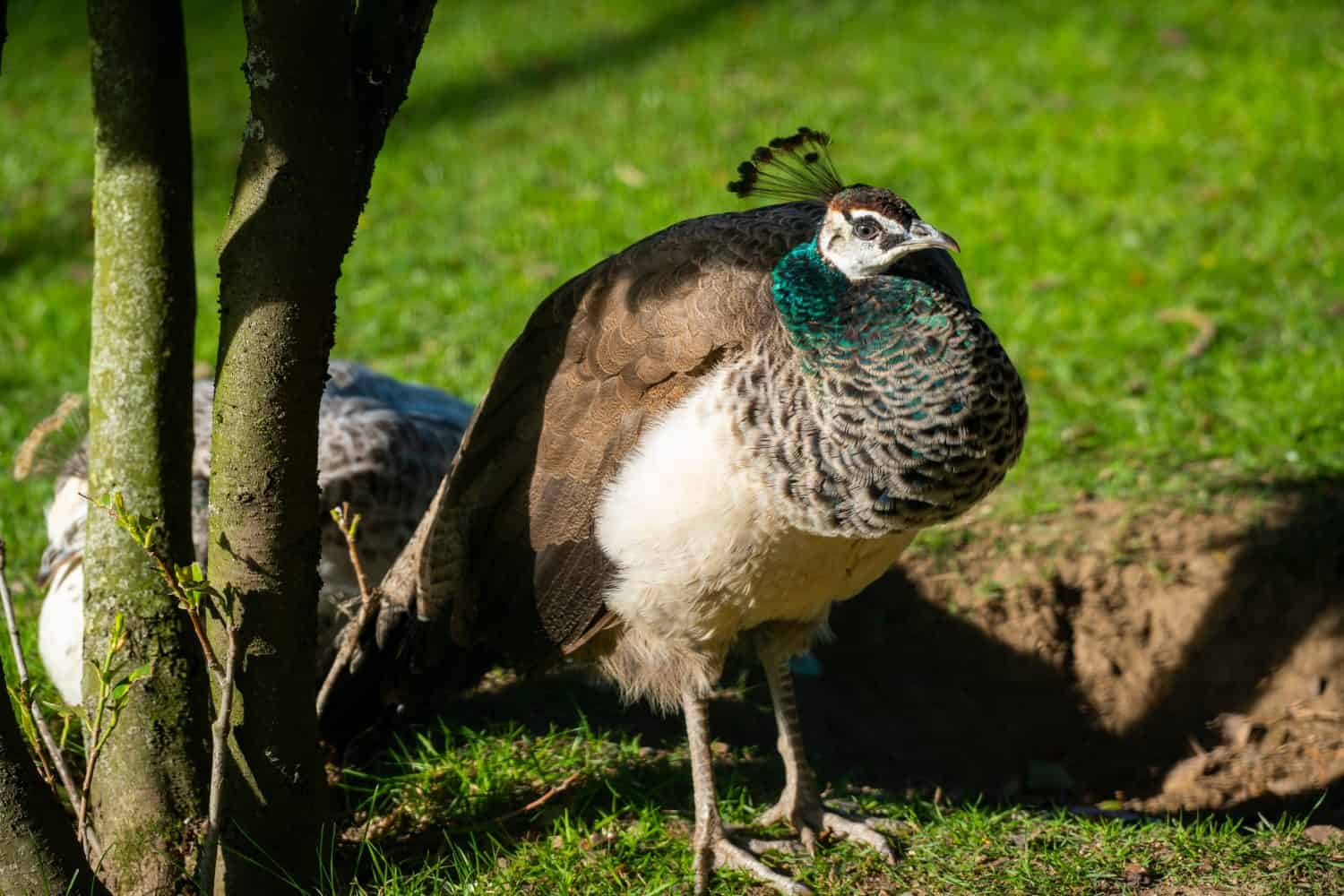
While males use calling to advertise themselves as mates, peahens use it to communicate.
©martin.dlugo/Shutterstock.com
Calling is slightly different from the other noises you usually hear from peafowl because the male doesn’t make it. Peahens use this nasal noise to communicate with other peans, and the frequency determines the message. Some frequencies indicate a threat, allowing other peahens to protect their nest. Others suggest the threat’s distance and other vital factors in their surroundings. These calls are part of why peafowl still survive so well in nature.
The call of a male has a much different message. Instead of alerting them of danger, they warn females that they are ready for mating. Listen to a peahen call here:
Squawking

Upon entering a new habitat, peacocks squawk to let others know they have arrived.
©Tom Meaker/Shutterstock.com
The squawking of a peacock can be loud, annoying, and constant. However, it serves them in many ways. If they just entered a new enclosure or habitat, the squawk is a way to let other peacocks know they are nearby. With more urgency, squawking also tells other peacocks that a predator is near so they can protect themselves.
This squawking reaches its most abundant during the making season. With all their other mating calls, peacocks use this noise to dominate their presence over other males to get the most attention. The squawking gets so noisy that separating the birds is the only way to reduce the volume.
To hear a peacock squawking, listen here:
Clicking

Stay away from a peacock if you hear them clicking!
©Jeetesh Kumar JK/Shutterstock.com
Clicking is a unique noise for peacocks. While it sounds similar to the rattling that these birds do with their tail, the clicking noise happens in the back of their throat. It is one of the many ways that males court females, but it also is a warning to others. Once a peacock chooses a mate, they are highly protective, and the clicking tells others to back off.
Check out this video to hear the clicking:
Screeching
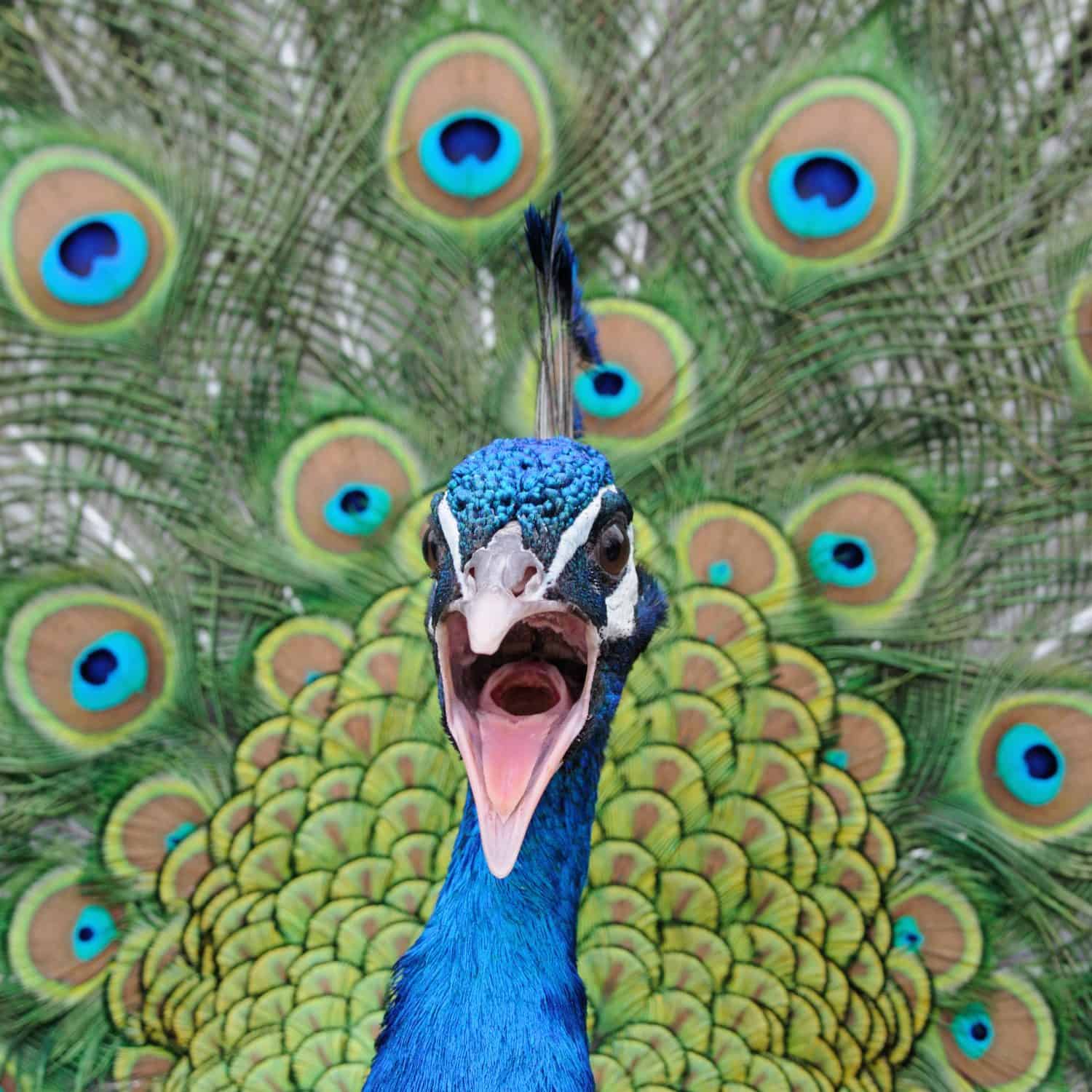
Only male peafowl can screech because females lack the anatomy for it.
©Nagel Photography/Shutterstock.com
The screeching is another way for males to tell females they are ready to mate. Screeching varies from region to region, but this noise is the most common in peacocks from tropical areas in Asia and Africa. The screech also expresses that there is danger nearby, protecting the flock. To create this noise, the peacock inflates a throat sac that emits a loud sound that travels up to 1 mile away.
Listen to the screeching here:
Cooing

Cooing is a gentle but affirmative way for females to respond to the males who court them.
©elrod/Shutterstock.com
One of the calmest sounds that peacocks make is a coo. Much like the cooing of a dove or pigeon, cooing primarily happens when a female wants to show their interest positively to the male. The sound is affectionate, demonstrating a willingness to mate with their suitor. The cooing noise is usually only heard by females. As part of the pheasant family, these birds use the sound like a kitten might purr. However, it is not an invitation to approach this wild bird, so it is best to give them distance from their mate.
Hear a peahen cooing here:
Types of Peacock Sounds and Meanings
| Sound | Why Do Peafowls Do It? |
| Scream | To protect the flock from danger. |
| Honk | To announce a peahen’s mating selection. |
| Rattle | To announce a peahen’s mating selection. |
| Caw | To express agitation and warn other birds of a predator. |
| Call | To warn of danger, attract females, and establish communication between peahens. |
| Squawk | To protect the flock from danger. |
| Click | To warn predators (like humans) to get away from their young or partner. |
| Screech | To protect flock from danger. |
| Coo | To show affection. |
The photo featured at the top of this post is © Mazur Travel/Shutterstock.com
Thank you for reading! Have some feedback for us? Contact the AZ Animals editorial team.






